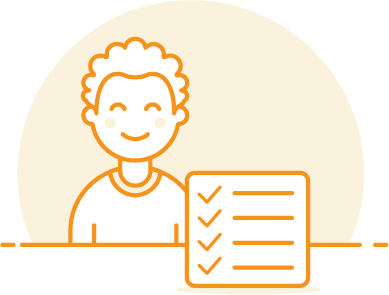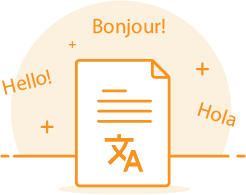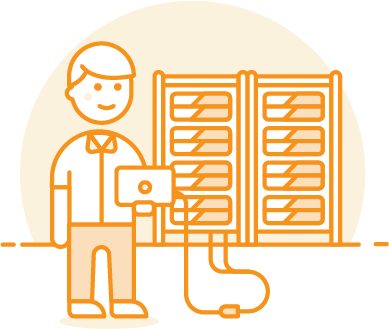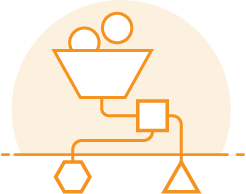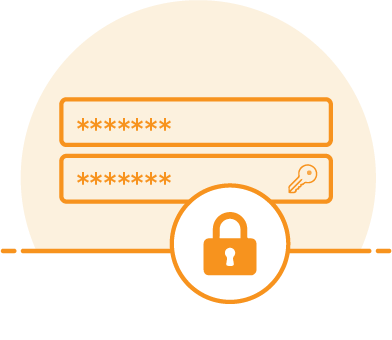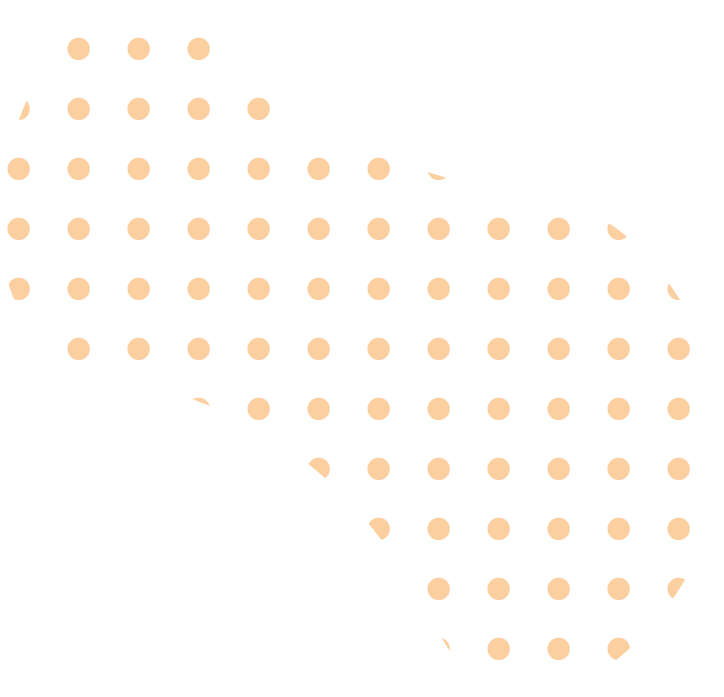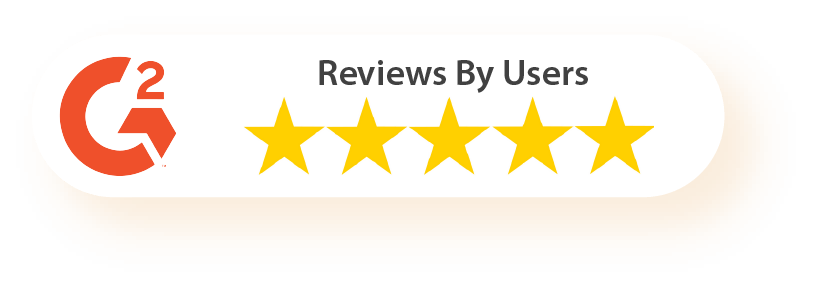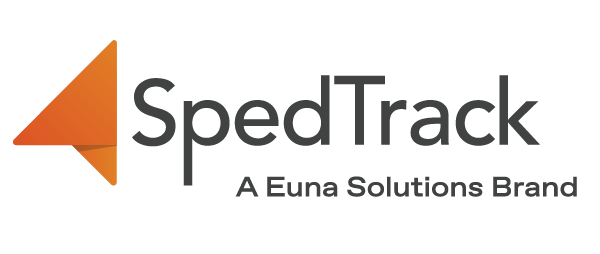In recent years, the need to further individualize education for students with disabilities has grown. This has led schools to implement broad formative assessments and develop programs and interventions that are more responsive to student needs than in the past.
The standards by which the services schools provide to students with disabilities are outlined in federal law, state law, various regulations, and more than 50 years of case law. Due to the strenuous requirements that these laws and regulations present, schools often find it difficult to determine how they can best meet the standards and ensure that the education they are providing for disabled students is consistent, compliant, and sustainable.
This blog dives deep into the topic of what it means to provide a free appropriate public education and gives 6 guidelines for teachers and administrators to follow to ensure they are providing the maximum educational benefit for their students.
What is FAPE?
The term FAPE is defined under the Individuals with Disabilities Education Act, as well as Section 504 of the ADA, as a free appropriate public education. Schools, by law, must provide this for every student with a disability to ensure that they are receiving the same educational opportunities as their able bodied peers.
Free
Public school districts must provide children with disabilities the special education services they need with no additional cost to the student or their families.
Appropriate
A student’s individualized education program (IEP) is meant to prescribe the services a student must receive to ensure adequate progress on their appropriately ambitious IEP goals in the least restrictive environment possible.
Public
Public schools must make special education services available to all eligible students who reside within their district boundaries.
Education
Students must be provided with an education that is appropriately challenging and in line with their individualized education program. This includes setting measurable goals for the student to achieve by their mastery date and tracking their progress throughout the IEP term.
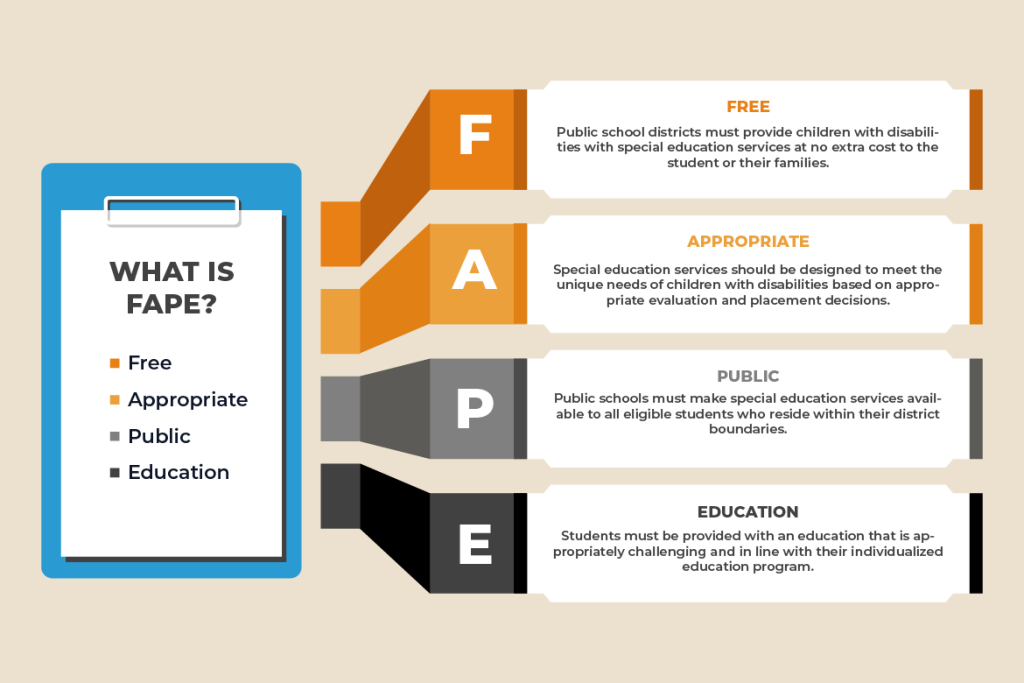
FAPE Checklist
With this broad definition of what a free and appropriate public education is, it can be difficult to specifically identify how to provide this for students. We have created a list of 6 questions for teachers to ask themselves to ensure they are meeting all of the requirements to provide their students with educational benefit while remaining legally compliant.
- Has the team, through testing and other evaluation materials, identified all unique needs arising from the child’s disability?
- Has the team identified and considered all impacts on the student’s performance in the general education curriculum related to the student’s disability?
- Does the student’s IEP include goals that are designed to provide educational benefit such that the student can make adequate progress in the general education curriculum?
- Do the services include specially designed instruction as well as related aids and services that will allow the student to participate and progress in the general education curriculum to the same extent as non-disabled peers?
- Has the school documented appropriate placement procedures?
- Does the student have access to meaningful participation with non-disabled peers to the maximum extent possible in light of the child’s individual education needs?
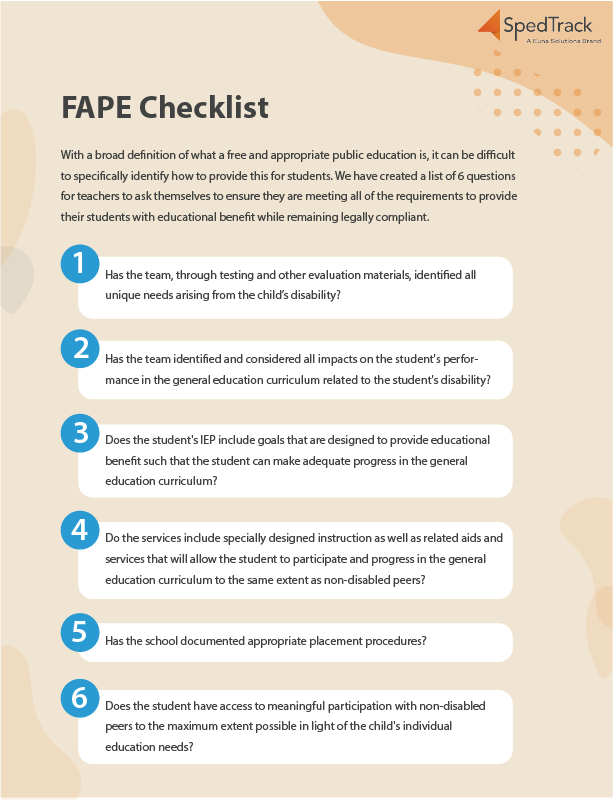
How to Identify Student Needs Through an IEP
To provide appropriate special education and related services, the IEP team must know what the student’s unique needs are. This happens through the special education evaluation process through extensive testing and using collected data.
The process does not end there, however, because the student’s needs change over time. Though reevaluations occur at least every three years, school staff can miss significant factors that emerge as the student grows and develops. Appropriate measures of the student’s aptitude, intelligence, and social/emotional needs should be considered at every evaluation.
School staff should also evaluate the student’s progress in the educational program and consider the data available, looking for any areas where the student is falling behind on their IEP goals. As children get older, skill gaps can emerge and appear.
Impacts to Consider in the General Education Classroom
While the IEP team is working through the evaluation process and writing the initial IEP, careful consideration must be given to the impact that a student’s disability may have on their progress in the general education curriculum. The team needs to thoroughly evaluate the student’s learning process and determine any areas that they might encounter academic difficulties that are directly related to the identified disability.
For example, a student who struggles with articulation of words may not need speech therapy if their articulation issues do not hinder them from progressing at an average pace in their current educational placement. If it becomes apparent that the articulation struggles are starting to prevent the student from making adequate progress in the regular classroom, however, the team will need to identify the services or accommodations that would provide appropriate assistance. This may include speech therapy, other related services, and/or accommodations and modifications from school personnel.
Once these services are identified, the school district must continue to monitor whether the student is making progress to determine if the services are appropriate.
IEP Goals Providing Educational Benefit
Appropriate IEP goals are based on the needs identified in the present levels of academic achievement and functional performance, and should present an appropriately ambitious standard for student performance.
In 2017, a question was raised in the case of Endrew F. v. Douglas County School District about what the term educational benefit truly meant and how it related to students receiving a free appropriate public education. This case determined the need for a child’s goals to be “challenging” and “appropriately ambitious” and created a “substantive standard on whether a child’s IEP is sufficient to confer an educational benefit on a child with a disability.”
To properly follow this standard, the IEP team must first determine the student’s academic and social/emotional strengths and needs gathered through assessments, observations, review of the child’s records, and conversations with the student, parents, teachers, and other related services professionals.
The team should then determine which needs are the most important for ensuring adequate progress in the child’s education. These will be those areas in which improvement will ensure progress in the general education curriculum in light of the child’s circumstances.
IEP goals must be specific and measurable, describing the precise behavior or activity the student should perform and the benchmark for performance.
An example of an IEP goal could be:
“Johnny will improve his reading fluency by reading at least 90 words per minute on grade-level text by the end of the school year.”
Goals that are vague cannot be accurately or reliably measured during the data collection process. That will create a struggle when showing academic growth or decline. The provision of a free appropriate public education requires that schools present these performance metrics as evidence that the placement and services are reasonably calculated to improve student performance.
The IEP goals should also be reviewed regularly to assess progress and determine if revisions need to be made, especially if the student is not demonstrating adequate growth to meet the benchmarks set by the IEP team.
Progress monitoring data is used to inform revisions to the goal and to determine if additional supports are needed to help the student achieve the goal. When school districts have found themselves mired in due process procedures, documentation showing that the IEP team is actively meeting to review progress and make adjustments aids them in showing that they are meeting legal requirements.
How Specially Designed Instruction Aids Student Progress
FAPE requires schools to develop a specific educational program that is designed to address the student’s individual needs.
The individualized education program should include special education services that a reasonable person would see as adequate to meet the child’s needs. This does not mean that the services have to be designed with a special education lawyer in mind! Teachers and administrators are not required to get it perfect; public education professionals are qualified to judge, to the best of their ability, if a program is “reasonably calculated”.
The key to ensuring that services are appropriate is monitoring progress and making adjustments. It is essential to monitor the child’s progress regularly. Data should be collected to track the child’s progress towards their goals, and adjustments should be made as needed. If the child is not making progress, the IEP team should reconvene to make modifications to the services.
Supplementary Aids and Services in the LRE
Supplementary aids, such as providing trained personnel, assistive technology, accommodations, and modifications are appropriate ways to ensure that students with disabilities have equal access to a free appropriate public education. A student whose disability prevents them from participating in some activities in a physical education class, for example, may not need a specially designed class if related services and modifications to the curriculum allow the student to participate to the best of their ability in the general class. These interventions can prevent inappropriate placement when a student could participate with non-disabled peers with only minor adjustments.
This extends to extracurricular activities – students with disabilities are entitled to participate in all educational activities, and may receive special education services, even for sports and clubs. Federal law requires that students with disabilities must have the same access to “nonacademic and extracurricular” activities as other students, and special education supports must be available during those times if the IEP team determines they are necessary for students with disabilities to have equal access to those activities.
Meaningful Participation with Non-Disabled Peers
When schools conduct the first evaluation and make the initial placement decisions, it is vital that the IEP team balances the need for support and individual instruction with the need for students with disabilities to be educated alongside their non-disabled peers to the greatest extent possible. Providing free appropriate public education includes giving students as much access to and experience in the regular education environment as is appropriate given the nature and severity of their disability. The Individuals with Disabilities Education Act requires states to have policies and regulations that, “to the maximum extent appropriate, ensure children with disabilities…are educated with children who are nondisabled.”
What Can Happen if a School Neglects FAPE?
When school districts make a good-faith effort to follow a student’s individual education plan and communicate with the family frequently and transparently, there will rarely be conflicts around the educational program and services. Complaints to a state public education agency arise when families believe that the school is not following the IEP or is unwilling to be responsive to their concerns.
Formal complaints
Formal complaints regarding a school district complying with Federal or State laws and regulations are handled by the state education agency, typically by a complaint investigator who will contact the school to request information and sometimes interview staff to review the family’s concerns. The investigator will issue a decision based on the facts of the case and may contain corrective action to be taken by the school.
Mediation
The district can, in most cases, request mediation with the family to resolve complaints. Mediation is a collaborative process designed to maintain a positive working relationship between the school and the family. A neutral professional mediator may be assigned to oversee the process. Mediation concludes with a committed agreement between the parties with no order from a hearing officer or state agency.
Due Process Procedures
If attempts at resolution or mediation are unsuccessful, the family and school district may find themselves in an impartial Due Process Hearing. This is a legal forum where disagreements about substantive issues related to identification, evaluation and placement decisions, and provision of free appropriate public education are heard and resolved by a formal hearing officer. Due Process Hearings are legal proceedings, similar to a court hearing, and often each party has attorneys that represent them.
A hearing officer will hear testimony from both parties, and consider evidence presented as well as any significant factors related to the complaint. They will render a decision and may order the school district to provide different or additional services, pay the family’s legal fees, or pay for private school tuition or other related costs if the student has enrolled in such a program due to a lack of progress or services related to the disability.
Ensure Compliance and Provide FAPE With SpedTrack
Legal requirements of IDEA and related Federal and State laws and regulations can be daunting for staff trying to balance compliance with appropriate instruction and services. Ensuring the provision of FAPE involves communication with all the involved parties, monitoring special education services and procedures, and ensuring that students are making adequate progress.
SpedTrack provides you with the tools to give you total confidence in your special education compliance. Built-in error checking features help school districts prevent future compliance errors, and progress monitoring tools aid districts in tracking the individual IEP progress of each student with a disability.
Request a demo today and see how our software can help you stay organized and compliant with the law.



